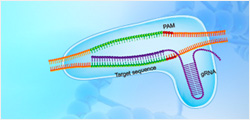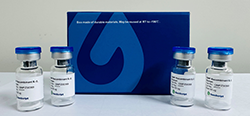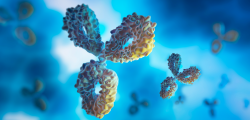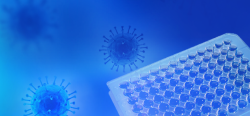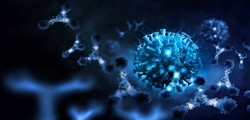The synthesis of signaling molecules is one strategy bacteria employ to sense alterations in their environment and rapidly adjust to those changes. In Gram-negative bacteria, bis-(3'-5')-cyclic dimeric GMP (c-di-GMP) regulates the transition from a unicellular motile state to a multicellular sessile state. However, c-di-GMP signaling has been less intensively studied in Gram-positive organisms. To that end, we constructed a fluorescent reporter based on a c-di-GMP-responsive riboswitch to visualize the relative abundance of c-di-GMP for single cells of the Gram-positive model organism Coupled with cell-type-specific fluorescent reporters, this riboswitch reporter revealed that c-di-GMP levels are mark... More
The synthesis of signaling molecules is one strategy bacteria employ to sense alterations in their environment and rapidly adjust to those changes. In Gram-negative bacteria, bis-(3'-5')-cyclic dimeric GMP (c-di-GMP) regulates the transition from a unicellular motile state to a multicellular sessile state. However, c-di-GMP signaling has been less intensively studied in Gram-positive organisms. To that end, we constructed a fluorescent reporter based on a c-di-GMP-responsive riboswitch to visualize the relative abundance of c-di-GMP for single cells of the Gram-positive model organism Coupled with cell-type-specific fluorescent reporters, this riboswitch reporter revealed that c-di-GMP levels are markedly different among cellular subpopulations. For example, cells that have made the decision to become matrix producers maintain higher intracellular c-di-GMP concentrations than motile cells. Similarly, we find that c-di-GMP levels differ between sporulating and competent cell types. These results suggest that biochemical measurements of c-di-GMP abundance are likely to be inaccurate for a bulk ensemble of cells, as such measurements will average c-di-GMP levels across the population. Moreover, the significant variation in c-di-GMP levels between cell types hints that c-di-GMP might play an important role during biofilm formation. This study therefore emphasizes the importance of using single-cell approaches for analyzing metabolic trends within ensemble bacterial populations. Many bacteria have been shown to differentiate into genetically identical yet morphologically distinct cell types. Such population heterogeneity is especially prevalent among biofilms, where multicellular communities are primed for unexpected environmental conditions and can efficiently distribute metabolic responsibilities. is a model system for studying population heterogeneity; however, a role for c-di-GMP in these processes has not been thoroughly investigated. Herein, we introduce a fluorescent reporter, based on a c-di-GMP-responsive riboswitch, to visualize the relative abundance of c-di-GMP for single cells. Our analysis shows that c-di-GMP levels are conspicuously different among cellular subtypes, suggesting a role for c-di-GMP during biofilm formation. These data highlight the utility of riboswitches as tools for imaging metabolic changes within individual bacterial cells. Analyses such as these offer new insight into c-di-GMP-regulated phenotypes, especially given that other biofilms also consist of multicellular communities.





